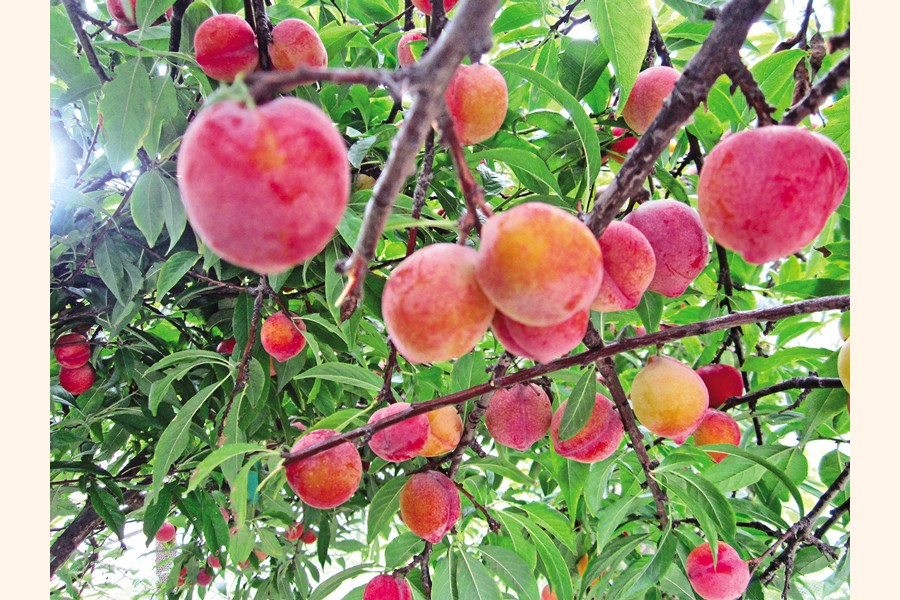
Aloo Bukhara: BARI invention draws queries from big names
FE REPORT | Thursday, 29 September 2022

The Bangladesh Agricultural Research Institute or BARI, of late, invented some technologies for producing food products by using locally-produced "Aloo Bukhara" or plum.
The BARI said at least seven such products could be produced by using the technologies.
Earlier, it also developed the BARI-1 Aloo Bukhara plant variety. And it is also very much popular with the farmers. Farmers in a number of northern districts including Lalmonirhat have planted such plums on a large scale.
BARI people familiar with the development told the FE that many big corporates of the country were showing keen interest in how to use the technologies in order to manufacture plum-related processed foods for the local and international markets.
"Square, Bashundhara, and ACI have contacted us to inquire about how to manufacture processed foods," said Dr. Md Masud Alam, a senior scientific officer at the Spices Research Centre at Bogura, told the FE.
He said they did not want money in exchange for transferring the technologies, except recognition. "Actually we want our recognition".
Dr. Alam said the technology was very much cheap and even any small firm could adopt it.
The BARI is the largest multi-crop research institute in the country conducting research on a wide variety of crops, such as cereals, tubers, pulses, oilseeds, vegetables, fruits, spices, flowers, etc.
Besides variety development, this institute also carries out research in areas as soil and crop management, disease and insect management, water management and irrigation, development of farm machinery, improvement of cropping and farming system management, post-harvest handling and processing, and socio-economic studies related to production, processing, marketing, and consumption.
The Spices Research Centre of Bogura is the extension of the BARI and designated for conducting researches on species.
Dr. Alam said the local variety of plum invented by the BARI would be tastier when processed. The institute invented the technologies.
He said jam, bar, pickle, candy, chutney, murobba and sandesh could be made by using the local variety of plums.
Dr. Shailendra Nath Mozumder, Principal Scientific Officer and Project Director of Species Research Centre of Bogura, told the FE that the yield of the plum variety was very good in the northern districts. Each tree bears around 50 kilogrammes of plums each season.
He, however, said Square Food procured some of such plums for their experiment. When the industry would start using it, there would be adequate demand for the same, he added.
The plum is also used in cooking biryani and other spicy foods.
It has immense health benefits as it comprises potassium and Vitamin C and has the potential to detoxify the body.
Plum is widely consumed as a dry fruit, especially during iftar parties, when Muslims break their Ramazan fast in the evening. The reason could be its considerable water content, which helps in keeping the fast throughout the day.
It protects an individual from harmful ultraviolet rays. Additionally, aloo-bukhara aids in developing cardiovascular movements in the body.
It possesses iron and that subsequently plays a part in the evolution of more red blood corpuscles. Thus, a person who consumes plum or its variants and dishes in a sizable quantity may be protected from blood deficiencies.
It could therefore possibly be eaten by patients who have lower blood pressure than usual.
Due to the antioxidants that aloo-bukhara carries, it could possibly be an anti-skin aging element. It could filter out contagions and result in clearer skin.
jasimharoon@yahoo.com